Material application of valves and pipes
Nickel alloy is an alloy with nickel as the main element, which can be used in different parts of pipelines and industrial valves, such as valve bodies, valve covers, balls, valve seats, valve stems, bolts, springs, etc.
Valves are part of a piping system and they are defined as components used for different purposes in a fluid flow. These purposes may involve stopping/starting flow, controlling flow, diverting flow, preventing backflow and releasing pressure [1] [2]. Figure 1 shows a ball valve which is a rotary valve in which the spherical closing member is rotated 90° to engage or disengage the port hole of the valve [2]. The ball in Figure 1 engages the through hole, thereby keeping the valve open.
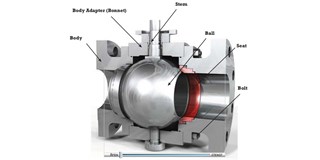 Figure 1. The ball valve is in the open position.
Figure 1. The ball valve is in the open position.
Introduction of valves and components
The different parts of the valve mentioned in this article are defined as follows [3]:
Valve body: The valve body-also known as the valve housing-is the most important part of the valve assembly, keeping all the parts together like a frame. The valve body is the first pressure boundary that receives fluid pressure. The end of the valve body is designed to connect the valve to the pipeline.
Bonnet: The bonnet is the second most important pressure bearing part; it covers the valve body and is made of the same material as the valve body.
Ball: The ball of the valve, also called "closure" [4] or "pressure control component" [4], used to stop or start fluid. When the valve is closed, all fluid pressure acts on one side of the ball, so this part is regarded as the third important pressure-containing part of the valve [3].
Valve seat: The valve seat provides a seat surface for the closure.
Valve stem: The valve stem is the connector between the valve closing member and the operator, and provides the necessary movement for the steel ball to close and open the valve. The valve stem is connected to the handwheel, lever or actuator from one side, and to the valve closing member from the other side. The actuator is responsible for automatically moving the internal components of the valve. The valve stem requires high mechanical strength, especially in the case of actuation, in order to withstand the load applied from the actuator side.
Bolts: Bolts are also pressure-bearing parts of the valve and are used to connect the valve body or bonnet together.
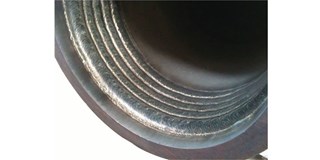 Figure 2. Inconel 625 covered in carbon steel pipe.
Figure 2. Inconel 625 covered in carbon steel pipe.
Why specify nickel alloy?
There are many reasons for specifying nickel alloys for valves and internal parts. These are summarized as follows:
Internal corrosion: In corrosive environments, carbon steel pipes may be covered (internally covered) with 3mm nickel alloys (such as Inconel 625) to reduce the risk of corrosion [5].
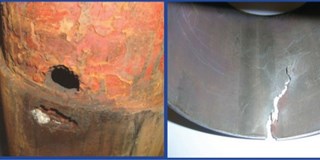 Figure 3. CO 2 (left) and H 2 S (right) corrosion on the pipeline
Figure 3. CO 2 (left) and H 2 S (right) corrosion on the pipeline
The inner covering layer of nickel alloy can be used for fluid service containing a large amount of corrosive compounds such as CO2 and hydrogen sulfide (H2S). As shown in Figure 3, CO2 and H2S corrosion attacks manifest themselves in the form of metal loss and cracks.
The solid nickel alloy, Inconel 625 pipeline, is also common in the offshore sector of the oil and gas industry and in hydrocarbon services with high levels of H2S.
Therefore, in some parts of the world, such as the Middle East, crude oil contains high concentrations of H2S, the valve body used in offshore oil and gas projects can be selected in Inconel 625 instead of 22Cr duplex. However, in the offshore industry where there is no H2S or very low content in Norwegian offshore oil and natural gas, 22Cr duplex steel is a very common choice for pipelines and valves [6]. In addition, the sealing area and valve seat cavity of the ball valve made of carbon steel can be covered with Inconel 625 to avoid crevice corrosion. Crevice corrosion refers to the local erosion of the metal surface where there are crevices, crevices or grooves.
External corrosion: Super duplex bolts are a common material choice for valves made with 22Cr duplex in the Norwegian offshore industry.
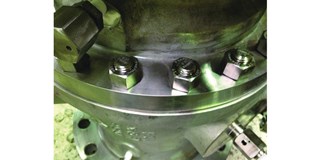 Figure 4. 22Cr duplex valve with Inconel 625 bolts and plugs
Figure 4. 22Cr duplex valve with Inconel 625 bolts and plugs
n the marine environment, the maximum allowable operating temperature of uncoated super duplex materials (for example, bolted connections) is 110°C [7] to prevent external chloride ion stress from causing cracks in the marine environment. Therefore, for 22Cr duplex valves with operating temperatures above 110°C, the super duplex bolts (bolts and nuts) have been upgraded to Inconel 625, as shown in Figure 4.
External grooves, such as the groove on the ring joint (RTJ) surface of the valve, are covered with Inconel 625 on the valve body flange made of carbon steel to avoid external crevice corrosion in offshore projects.
Wear and friction: Abrasion is a form of wear caused by two surfaces rubbing together. There are various strategies to avoid wear, such as lubrication, reducing roughness and creating a difference in hardness between the two sliding surfaces. The threaded plug shown in Figure 4 is used to discharge the fluid accumulated in the ball valve body cavity. The stepped part of the plug will cause friction and wear with the valve body when it is opened and closed. Therefore, the plug material is selected in Inconel 625 to create a hardness difference with the valve body, thereby reducing wear and friction.
Mechanical strength: The actuated valve generates a high load on the valve stem. Therefore, the valve stem of the drive valve should be made of high-strength materials, such as Inconel 718 for carbon steel, stainless steel 316 and 22Cr double valve body. Inconel 718 can also be used for ball and bolt connection components, especially in subsea valves.
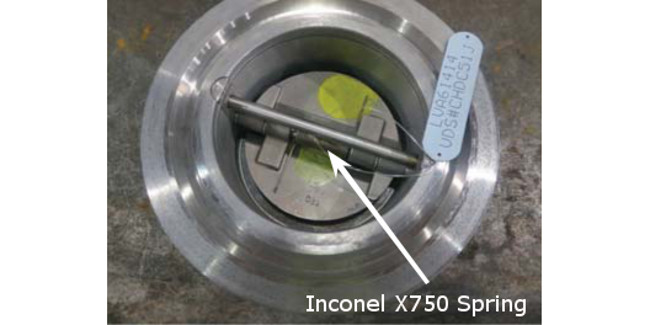
Figure 5. Double-plate check valve in 22Cr duplex with Inconel X750 spring
Cyclic and fatigue stress: Springs are usually used in check valves to move the disc back to its original position and close the valve. Many check valves have a high opening and closing rate (circulation). Therefore, because Cornell X750 spring material has good cycle resistance and fatigue stress, it is widely used in check valves. Figure 5 shows a double-plate check valve with a carbon steel body and a martensitic stainless steel disc, which are closed by an Inconel X750 spring.
Nickel alloy material Inconel
625 (Alloy 625) is a nickel-based alloy with high corrosion resistance and mechanical strength. The chromium content of this material is 22%, the molybdenum content is 9%, and the nickel content is about 58%. The strength of this material comes from the strengthening effect of molybdenum and niobium on its nickel-chromium matrix. The content of molybdenum is relatively high.
Inconel 718 is a high-strength, relatively highly corrosion-resistant nickel-chromium alloy. The material has approximately 52.5% nickel, 20% chromium and 3% molybdenum. This alloy is easy to manufacture and weld, and has good fatigue resistance. Two common heat treatments for this alloy are solution annealing and age hardening. Inconel X750 is another nickel-chromium alloy with high corrosion resistance and high strength. The alloy contains at least 70% nickel and an average of 15% chromium. By performing different heat treatments on the alloy, different mechanical properties can be achieved. This alloy is an economical choice that is widely used in various industries in addition to oil and natural gas, such as gas turbines and rocket engines.
conclusion and suggestion
Inconel alloys (such as Inconel 625, 718 and X750) are widely used in pipelines and valves in the offshore sector. The body, bonnet, seat, ball, bolt, plug and spring of the ball valve are usually made of the above alloys. Although nickel alloys are widely used for internal and external corrosion resistance, they have different applications, such as increasing mechanical strength, reducing friction and wear, promoting cycling and reducing fatigue stress.
